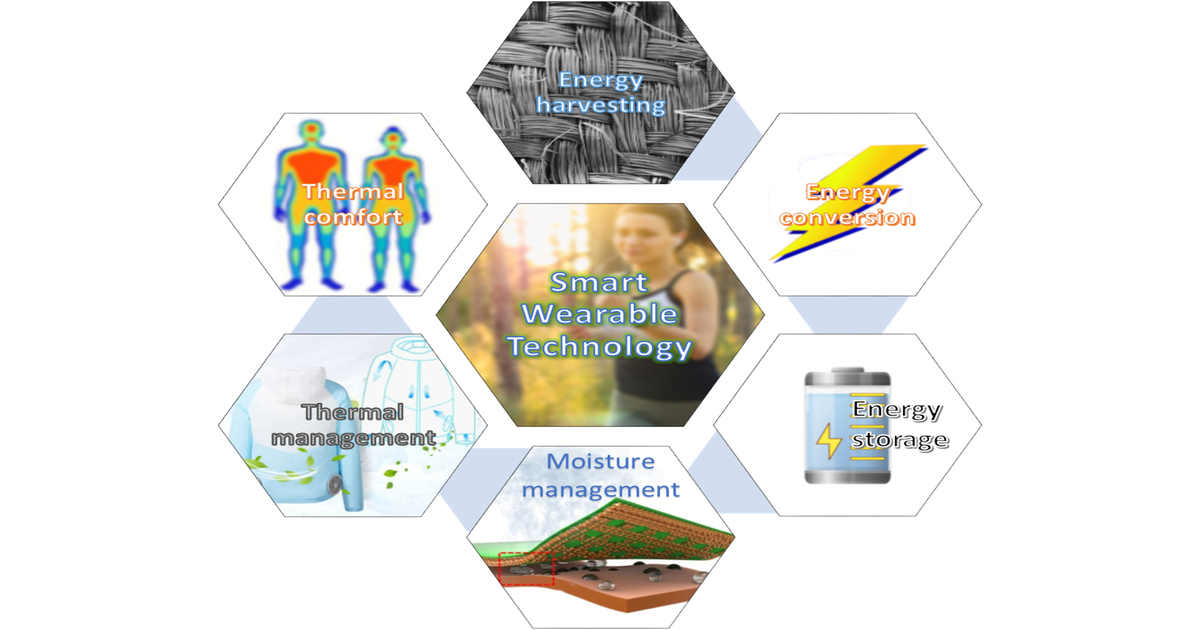Smart Wearable Technology: Thermal Management and Energy Applications
A special issue of Processes (ISSN 2227-9717). This special issue belongs to the section "Energy Systems".
Deadline for manuscript submissions: 15 January 2025 | Viewed by 16995

Special Issue Editors
Interests: heat and mass transfer; CFD; thermal management; flexible heat pipe; thermal comfort; smart textiles
Special Issue Information
Dear Colleagues,
Health and energy are the two main problems humankind faces in the 21st century, and smart wearable technology can play an important role in human health and energy applications. Especially when heat/cold waves strike human society more frequently due to global warming, people tend to suffer from an increasing number of temperature-related illnesses and even death. Smart wearable technology can take advantage of body heat or external energy to improve human thermal comfort and health. Additionally, smart wearable technology only heats or cools the microclimate around the human body instead of the whole room space, which can reduce building energy consumption and greenhouse gas emissions.
Furthermore, body heat could also be used to generate electricity either through thermoelectric elements or via sweat evaporation from clothing fabrics. In addition, the energy of body motion also could be harvested and converted into electricity through the electromagnetic effect, piezoelectric effect, or triboelectric effect. With these effects, smart wearable technology could be used to generate electricity for wearable sensors used to monitor human health. Hence, smart wearable technology can contribute to human health and alleviate global warming through human body thermal management as well as energy harvesting, conversion, and storage.
This Special Issue, entitled “Smart Wearable Technology: Thermal Management and Energy Applications”, will focus on the relevant smart wearable technologies, including, but not limited to, human body thermal and moisture management, radiative cooling, phase change materials, thermal comfort, sweat evaporation, evaporation induced electricity generation, thermoelectric effects, piezoelectricity, triboelectricity, etc. Research papers, communications, and reviews are all welcome.
Dr. Zhanxiao Kang
Dr. Qing Chen
Guest Editors
Manuscript Submission Information
Manuscripts should be submitted online at www.mdpi.com by registering and logging in to this website. Once you are registered, click here to go to the submission form. Manuscripts can be submitted until the deadline. All submissions that pass pre-check are peer-reviewed. Accepted papers will be published continuously in the journal (as soon as accepted) and will be listed together on the special issue website. Research articles, review articles as well as short communications are invited. For planned papers, a title and short abstract (about 100 words) can be sent to the Editorial Office for announcement on this website.
Submitted manuscripts should not have been published previously, nor be under consideration for publication elsewhere (except conference proceedings papers). All manuscripts are thoroughly refereed through a single-blind peer-review process. A guide for authors and other relevant information for submission of manuscripts is available on the Instructions for Authors page. Processes is an international peer-reviewed open access monthly journal published by MDPI.
Please visit the Instructions for Authors page before submitting a manuscript. The Article Processing Charge (APC) for publication in this open access journal is 2400 CHF (Swiss Francs). Submitted papers should be well formatted and use good English. Authors may use MDPI's English editing service prior to publication or during author revisions.
Keywords
- thermal and moisture management
- phase change materials
- thermal comfort
- energy harvesting
- energy conversion
- energy storage
- evaporation and condensation
- evaporation-induced electricity generation
- thermoelectric effects
- piezoelectricity
- triboelectricity
- solar energy
Benefits of Publishing in a Special Issue
- Ease of navigation: Grouping papers by topic helps scholars navigate broad scope journals more efficiently.
- Greater discoverability: Special Issues support the reach and impact of scientific research. Articles in Special Issues are more discoverable and cited more frequently.
- Expansion of research network: Special Issues facilitate connections among authors, fostering scientific collaborations.
- External promotion: Articles in Special Issues are often promoted through the journal's social media, increasing their visibility.
- e-Book format: Special Issues with more than 10 articles can be published as dedicated e-books, ensuring wide and rapid dissemination.
Further information on MDPI's Special Issue polices can be found here.






